Fernando Cabrera, Vanessa Gibson, Nathalia Fernandez and Luis Sepulveda talked about disparities, community clinics, fresh produce, the health impacts of violence and more.
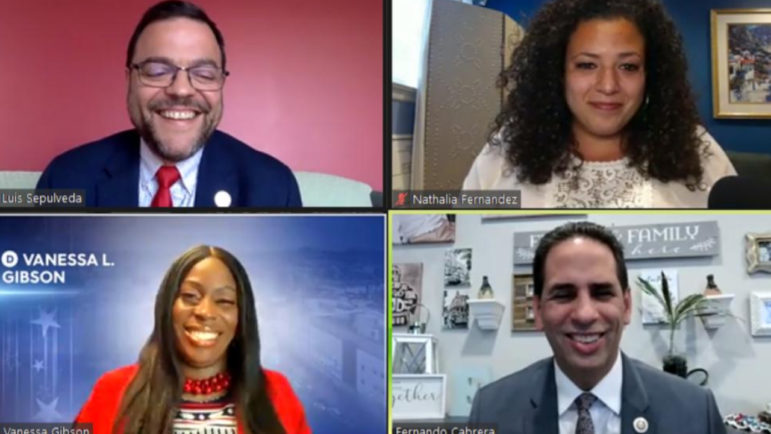
Roger Newcomb/BCHN
The participants, clockwise from top left: Sen. Luis Sepulveda, Assemblymember Nathalia Fernandez, Councilmember Fernando Cabrera and Councilmember Vaness Gibson.When you go in to see your doctor for your annual physical, she probably doesn’t just ask you if you are more or less healthy than last year. Instead, a nurse checks your blood pressure, takes your temperature and weighs you. A phlebotomist draws blood to check your iron, white- and red-blood cell counts, cholesterol and other levels. The doc pokes and prods, looks and listens.
The Bronx has long had poor health outcomes. The current borough president, Ruben Diaz Jr., launched a campaign a few years back with the goal of getting the borough out of last place among all 62 counties in heath metrics. The COVID-19 crisis has only made the Bronx’s vulnerability clearer, and made health a key issue in the 2021 campaign.
But given the scope of the Bronx’s health problems, how should voters measure elected officials’ success at addressing it?
Thursday’s night’s Bronx borough president candidates’ forum asked Democrats running in the June 22 primary that very question: “How should we measure your progress toward increasing health equity in the Bronx during your borough presidency? What metrics or signals should we watch to see if you have delivered?”
“Well, let’s look at where we’re last in. We’re last in a lot of areas. So we need to make sure that we’re no longer last in homelessness or last in overall health,” said Assemblymember Nathalia Fernandez. “We need to see how we can really deliver on these areas: put people in homes, make sure that our schools are well-funded and really equal across the board with amenities, make sure that our community boards are representative of their communities.”
“Looking at how the community boards are, looking at where our are schools are, looking at our heath institutions, that they are up to date, that they are well-equipped and funded is where I would say, measure me,” Fernandez added.
Councilmember Vanessa Gibson said the key question is “how are we able to turn those numbers around into success stories and not statistics.”
“How are we able to create real, sustainable and green jobs that are stable and a pathway to the middle class?” she asked. “How are we able to crate a mechanism where we have a real, public education system that works for all and not just for some?”
Sen. Luis Sepulveda was the most explicit. “I have a lot of confidence in my ability to deliver for this county,” he said. “If by the end of my first term we are [still] last in healthcare metrics, [still] last in employment and we do not have a graduation rate that exceeds 80 percent, I will not run for reelection.”
Councilmember Fernando Cabrera put the emphasis on deliverable services rather than outcomes.
“Let’s get back to providing healthy nutrition classes – that’s measurable. We can measure how many faith-based organizations we are partnering with. We can measure quality training for homecare workers. We can measure to be able to say, ‘This is how much funding is going to be required for our health care institutions to be fully equipped.’”
Over the 75-minute debate sponsored by the Bronx Community Health Network and City Limits, the four candidates (the fifth person on the ballot, retired police Lt. Samuel Ravelo, withdrew from the event, citing a conflict) answered questions about racial disparities, homeless shelters, community clinics, care for aging Bronxites and more.
Watch the video below.



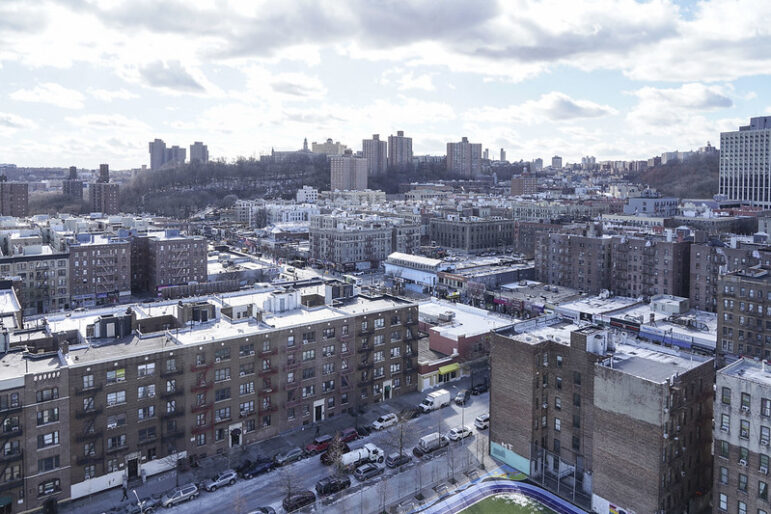
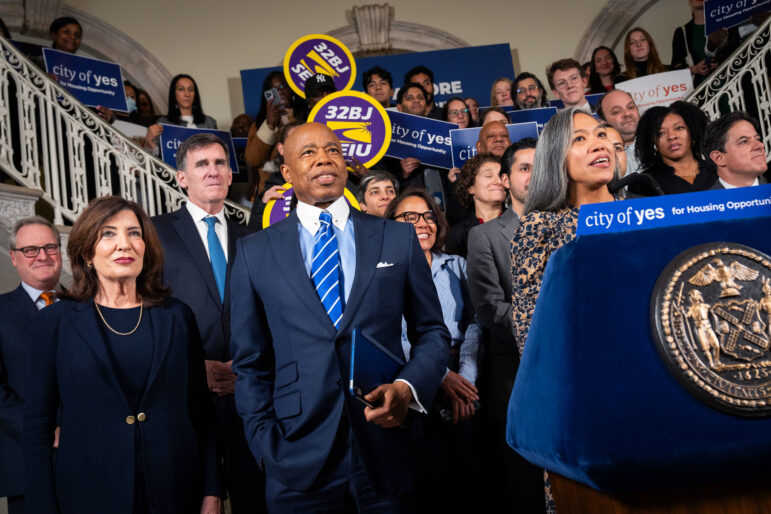
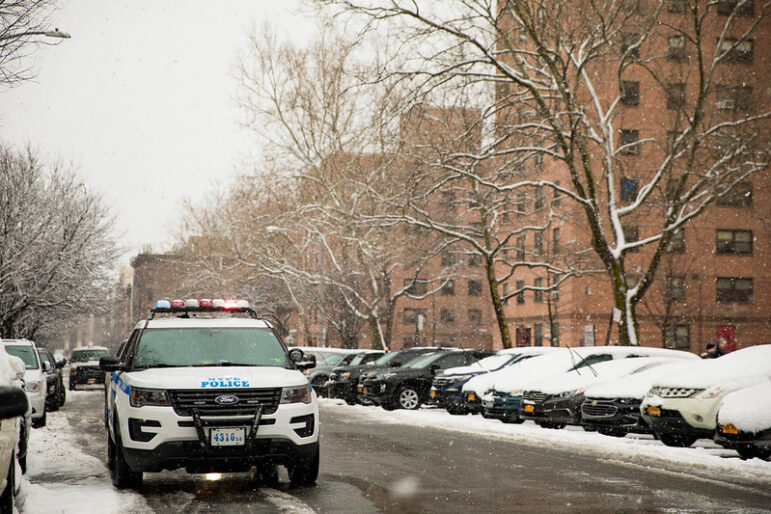
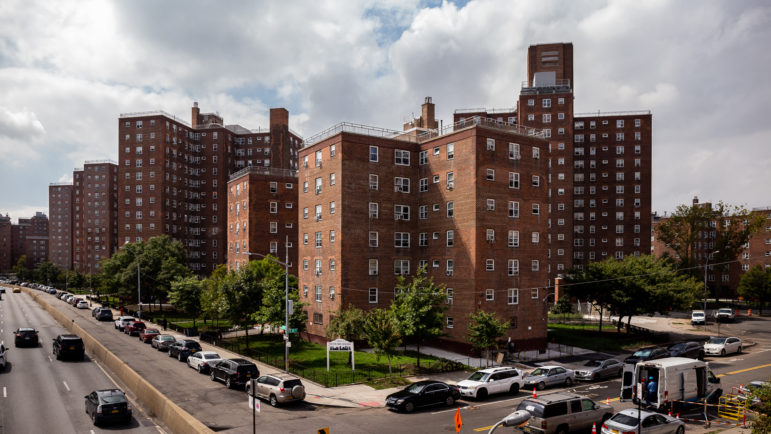



2 thoughts on “Borough President Candidates Offer Visions for a Healthier Bronx”
As a longtime Bronxite, retired NYC teacher and older adult living in the west Fordham road and University Ave community I am really having a very difficult time with the right to quiet enjoyment and quality of life in my new residence. And I am not alone. I hope the next Bronx borough president will acknowledge the abandonment of this law and crackdown on these people who are mocking up their cars with noise making engines and extremely loud speakers blaring loud music/noise pollution disrupting a community of hard working people and children.
This disgusting and inconsiderate behavior must be addressed legally and by our NYC police. Fines and consequences must be brought back to the Bronx and then respect, quality of life and our liberties will once again be ours to enjoy. I’m an older adult and from the South Bronx and I know people love their music but be reasonable and fair to the rest of us. I think we deserve that much. Thank you
Also add to that the dirt bike riders/ATV riders that operate incredibly recklessly. I recently saw a large group ride the wrong way and through a red light on the Grand Concourse.
Some may say these are minor concerns. However, reckless drivers of all kinds of vehicles impact the health (physical well-being) of others. Also, more people might use active transportation like bikes if they felt safer on the roads. The noise and the necessity to watch for these reckless riders also increases the stress levels of Bronxites, which we know impacts mental and physical health.
And obviously the politicians and all other stakeholders must continue to address disparities in healthcare, issues of pollution, gang and domestic violence, access to affordable and healthy food and access to affordable and safe housing in order to improve health outcomes for Bronx residents.